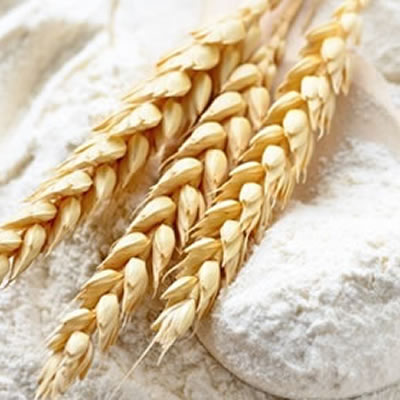
Green Flour
Also known as immature or freshly milled flour
What is Green Flour?
Green flour is a freshly-milled wheat that has not been given time to age. It is commercially used within 48 hours of being milled.
The aging of flour refers to the physicochemical reactions, triggered by the presence of oxygen, that take place during storage. These changes seem to improve the breadmaking quality of flour.
.
Origin
The use of green flour became a popular practice to keep up with advances in commercial or high-speed bread production. Bakeries and mills converted their facilities to allow storage of limited amounts of patent flour in order to keep inventory costs low. This results in a more frequent supply of flour, which then requires the flour to be milled then shipped within 24 to 48 hours.
Large silos were gradually replaced by small bins that were frequently filled with fresh flour to provide enough raw material according to the bakery’s production plan.
How it works
The maturing process exposes flour to atmospheric oxygen. This encourages the oxidation of some components such as yellow carotenoid pigments and gluten-forming proteins. Green flour does not have enough time to go through this process.
Oxidation increases the strength of the gluten matrix by increasing the number of disulfide bonds in proteins.
Flour aging or maturation for several weeks increases water absorption, dough strength and elasticity coming out of the mixer. When freshly milled flour is used, more dough conditioners or flour improvers such as bleaching or oxidizing agents are required to provide equivalent results.1,2
The following diagram helps explain the difference between aged or matured flour and green flour.

It is important to note that aging does not improve all quality parameters of wheat flour. It only provides some oxidation as the process is slow and requires several weeks, or even months to render good results. Properly aged flour may still require amylase supplementation, malting, or enriching, according to legal requirements and customer’s specifications. This is why it is usually not possible to achieve a perfect “white” color in the flour by just letting green flour mature for a certain period of time. Most often, a chemical bleaching agent may be necessary to comply with quality specifications in terms of product color.
Application
The following table provides a comparison between the characteristics of green and aged flour:
| Green flour | Aged flour |
|
|
To create better products with freshly milled flour, try the following approaches:
- Use higher amounts of dough conditioners, such as oxidizing agents or enzymes
- Add vital wheat gluten
- Use a sponge and dough system
- Use the Chorleywood bread process
Some bakers prefer not to use green flour to avoid issues with poor dough handling properties, such as weaker and slacker dough with poor gas retention. However, these conclusions may not be due to the green flour itself. Instead, there may be a lack of understanding the need to balance operational and formulation requirements to produce high quality baked goods.
References
- Harrel, C. G. “Maturing And Bleaching Agents Used In Producing Flour.” Industrial & Engineering Chemistry 44.1 (1952): 95-100.
- Bennett, Ruth, and J. B. M. Coppock. “The Natural Ageing of Flour.” Journal of the Science of Food and Agriculture 8.5 (1957): 261-70.

